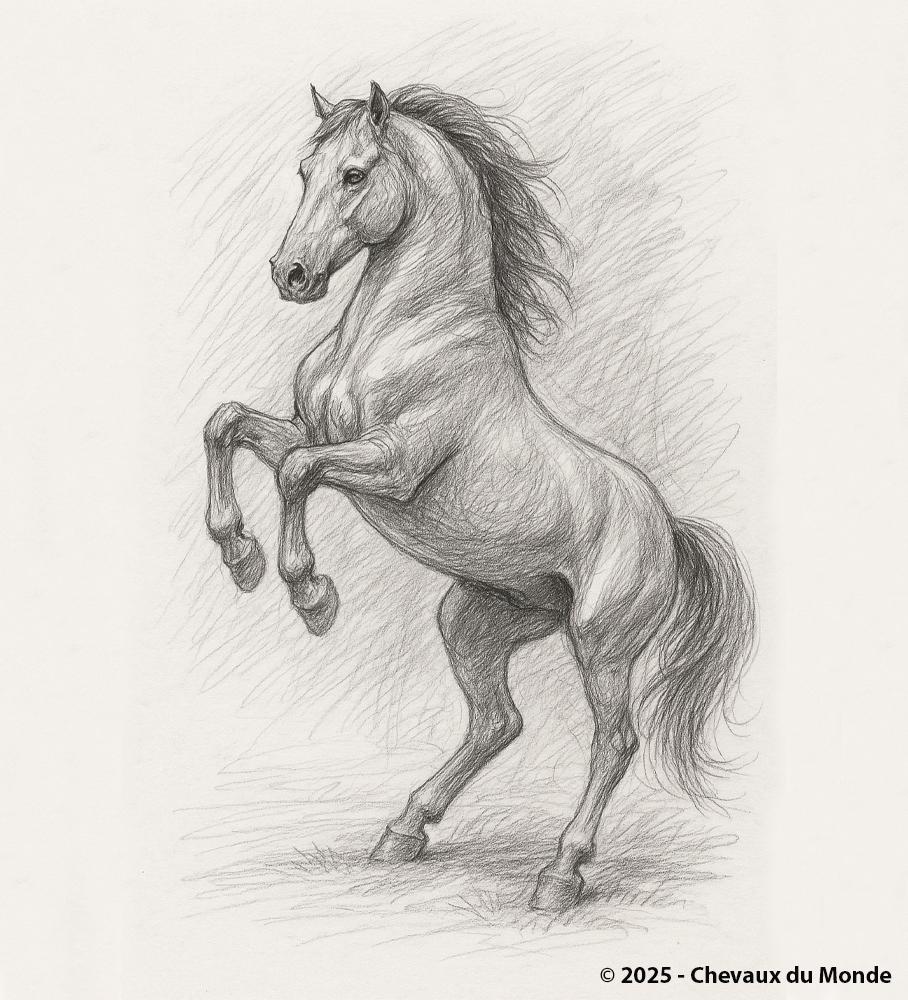BREEDING MANAGEMENT AND HYBRID HORSE BREEDS: SCIENCE, TRADITION AND CHALLENGES

Strength and legacy: equine crossbreeding blends performance, tradition, and thoughtful selection at the heart of breeding challenges.
The horse is one of the domestic animals that has undergone the most crossbreeding throughout history. These practices have given rise to new hybrid breeds, sometimes officially recognized, sometimes considered as local populations or types without a stud-book.
Understanding the management of crossbreeding sheds light on the challenges of genetic selection, cultural heritage, and animal welfare.
The Foundations of Breeding Management
Natural selection vs. human selection
- Natural selection: horses once reproduced according to their adaptation to the environment (climate, resources, predators).
- Human selection: since Antiquity, humans have chosen which individuals to breed in order to obtain specific qualities (endurance, speed, strength, temperament).
Main objectives of crossbreeding
- Improving sports performance (e.g. Thoroughbred + local breeds to create sport horses).
- Enhancing hardiness and resistance to disease.
- Adapting to agricultural or military needs (draft horses, cavalry mounts).
Types of Equine Crossbreeding
Intra-breed crossbreeding
These crosses aim to reinforce the characteristics of an existing breed, while maintaining a certain degree of controlled inbreeding.
- Example: the Thoroughbred, where selection remains very strict.
Inter-breed crossbreeding
They consist of combining two different breeds to merge their qualities.
- Historical example: the Irish Sport Horse, resulting from the cross between the Thoroughbred and the Irish Draught, highly valued in eventing.
- Modern example: the European Warmblood (Hanoverian, Holsteiner, etc.), developed through successive infusions of Thoroughbred and trotter blood.
Experimental and hybrid crossbreeding
Some crosses lead to officially recognized hybrid breeds, others remain marginal.
- The mule (donkey × mare): sterile, but prized for its strength and endurance.
- The hinny (stallion × jenny): rarer and generally less efficient.
- Modern hybrid horses: specific crosses for endurance (Arabian × Thoroughbred = Anglo-Arab).
Case Studies: Famous Hybrid Breeds
The Anglo-Arab
- Originated in France in the 19th century.
- Cross between the Thoroughbred (speed) and the Arabian (resistance and elegance).
- Today recognized worldwide as a sport horse of prestige.
The Quarab
- Cross between the Quarter Horse and the Arabian.
- Objective: combine the maneuverability of the Quarter Horse with the nobility of the Arabian.
- Very popular in certain western riding disciplines.
The Poitevin Mule
- Result of crossing the Poitevin Draft and the Poitou donkey.
- Known as one of the best mules in the world, historically exported on a large scale.
Current Issues and Debates
Preservation of local breeds
Uncontrolled crossbreeding threatens some native breeds by reducing their genetic specificity. Conservation programs (FAO, national stud-books) aim to maintain diversity.
Ethics and animal welfare
Some crosses, such as those producing sterile or fragile individuals, raise ethical questions. Modern research increasingly seeks to regulate reproduction.
Sport and standardization
In the sporting world, there is a trend toward standardization of sport horses (Warmbloods), sometimes at the expense of morphological diversity. This raises questions about the future of traditional breeds.
Conclusion
The management of crossbreeding and hybrid breeds reflects a balance between innovation and preservation. It shows how humans have shaped the horse to suit their needs, but also reminds us of the importance of conserving genetic wealth for the future.
"To crossbreed is to invent; to preserve is to protect. The future of the horse rests on this double responsibility."
